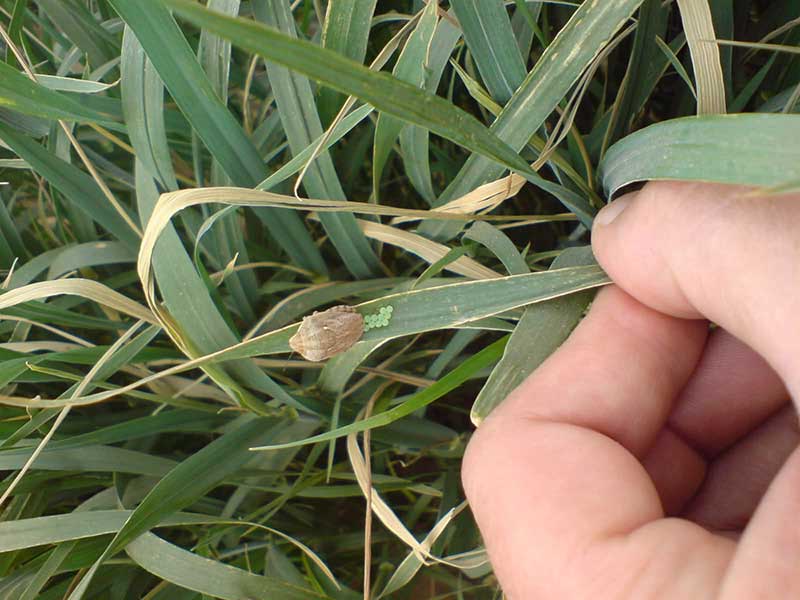Shape and Biology of Cereal Flies
This pest has been collected from varamin for the first time and has been reported in some parts of the country. The larvae of this fly dry it by feeding on the central buds of wheat and barley.
As a result of this attack, other buds are removed from around the bush and the plant becomes very thick, but at the same time it does not grow and the wheat cluster is not formed. Further damage is severe in years when rainfall is low and spring is cold. This pest damages all kinds of corn.
Shassy's form:
The complete insect is 1.5-2 mm long and black. The heads of the shape are the same as the chest. Prominent and composite eyes and each one on the sides of the head covers the width of the head 4.1. The inner edge of the eyes has 5 to 6 hairs. On the forehead there is a shiny black triangle shape, the middle of which is latticed. The edges next to it are equipped with 8 or 9 hairs. In the middle of the triangle, there are three black eyes. The chest is glossy black and its underlying surface is highlighted and the top of the chest is white. The shape of the 5 joints is fluffy and the underlying surface is brightly colored. The wings are smoky and fluffy. The full larvae are 4-5 mm long and milky white and its head is equipped with a pair of short tentacles of cylinders.
Biology:
This insect spends the winter in the form of the last larusan. In early spring it becomes a pupae and after about a week, small flies appear. Full insect flight takes place during hot hours of the day. After feeding and coupling each female fly, 40-20 eggs are placed in the leaf pod and rarely in the leaf spread or next to the crown of wheat. After three to five days, the larvae appear and go to the central bud of the plant. As a result, the nutrition of the larvae of the central bud is yellow and dried, but the leaves on the other side of the plant remain green and watery. After the larvae period, which takes 2 to 3 weeks depending on the ambient conditions, there are many spring carpal wheat plants around the plant. It is a multigenerational insect and attacks wheat and barley fields as well as grassworks in the spring before going to the cereal cluster and in autumn. In polluted fields and lawns, spraying with 2 per 10000 lindin solution 25% or malathion 60% gives the desired result.

